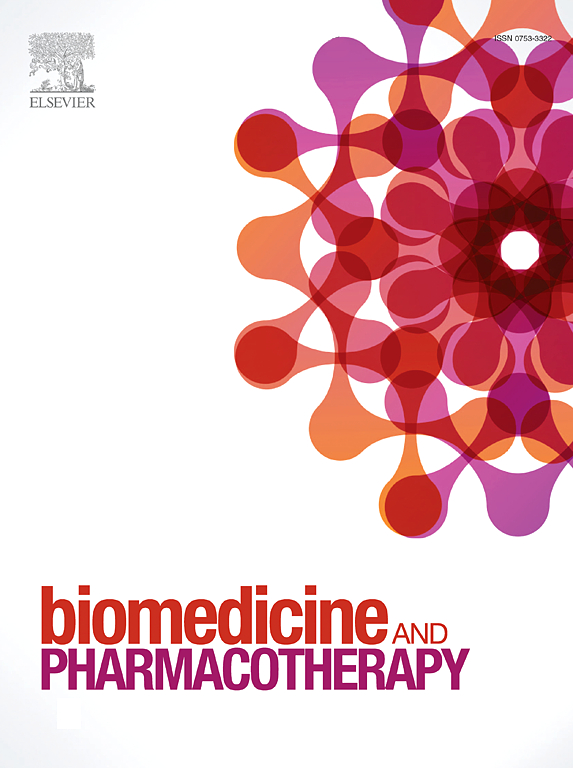Dexmedetomidine for the treatment of sepsis-associated encephalopathy: Mechanism and prospects
IF 6.9
2区 医学
Q1 MEDICINE, RESEARCH & EXPERIMENTAL
引用次数: 0
Abstract
Sepsis-associated encephalopathy (SAE) is a severe central nervous system complication that is secondary to sepsis and is characterized by a poor prognosis, high mortality, and multiple systemic manifestations. Although the specific etiology remains incompletely understood, SAE typically presents with varying degrees of neurological dysfunction. The complex mechanisms underlying SAE significantly influence patient outcomes. Recent studies have emphasized the roles of blood![]() brain barrier (BBB) disruption, microglial activation, mitochondrial dysfunction, apoptosis, inflammatory responses, and oxidative stress in the development and progression of SAE. Dexmedetomidine, a highly selective α2-adrenergic receptor agonist initially employed as an anesthetic adjunct, has attracted increasing attention for its therapeutic potential in SAE. Its notable pharmacological properties include anti-inflammatory activity, modulation of microglial responses, regulation of immune function, stabilization of mitochondrial activity, inhibition of apoptosis, and maintenance of hemodynamic stability in patients with sepsis. In addition, dexmedetomidine supports gastrointestinal homeostasis and offers multiorgan protection. This review consolidates current findings regarding the protective mechanisms of dexmedetomidine in sepsis-induced brain injury and provides insight into its potential clinical applications in the management of SAE.
brain barrier (BBB) disruption, microglial activation, mitochondrial dysfunction, apoptosis, inflammatory responses, and oxidative stress in the development and progression of SAE. Dexmedetomidine, a highly selective α2-adrenergic receptor agonist initially employed as an anesthetic adjunct, has attracted increasing attention for its therapeutic potential in SAE. Its notable pharmacological properties include anti-inflammatory activity, modulation of microglial responses, regulation of immune function, stabilization of mitochondrial activity, inhibition of apoptosis, and maintenance of hemodynamic stability in patients with sepsis. In addition, dexmedetomidine supports gastrointestinal homeostasis and offers multiorgan protection. This review consolidates current findings regarding the protective mechanisms of dexmedetomidine in sepsis-induced brain injury and provides insight into its potential clinical applications in the management of SAE.
右美托咪定治疗败血症相关脑病:机制和前景
脓毒症相关脑病(SAE)是一种继发于脓毒症的严重中枢神经系统并发症,其特点是预后差、死亡率高、多系统性表现。虽然具体的病因尚不完全清楚,但SAE通常表现为不同程度的神经功能障碍。SAE的复杂机制显著影响患者的预后。最近的研究强调了血脑屏障(BBB)破坏、小胶质细胞激活、线粒体功能障碍、细胞凋亡、炎症反应和氧化应激在SAE发生和发展中的作用。右美托咪定是一种高选择性α2-肾上腺素能受体激动剂,最初用作麻醉辅助剂,因其在SAE中的治疗潜力而引起越来越多的关注。其显著的药理作用包括抗炎活性、调节小胶质细胞反应、调节免疫功能、稳定线粒体活性、抑制细胞凋亡和维持脓毒症患者的血流动力学稳定性。此外,右美托咪定支持胃肠道稳态并提供多器官保护。这篇综述整合了目前关于右美托咪定在败血症性脑损伤中的保护机制的研究结果,并对其在SAE管理中的潜在临床应用提供了见解。
本文章由计算机程序翻译,如有差异,请以英文原文为准。
求助全文
约1分钟内获得全文
求助全文
来源期刊
CiteScore
11.90
自引率
2.70%
发文量
1621
审稿时长
48 days
期刊介绍:
Biomedicine & Pharmacotherapy stands as a multidisciplinary journal, presenting a spectrum of original research reports, reviews, and communications in the realms of clinical and basic medicine, as well as pharmacology. The journal spans various fields, including Cancer, Nutriceutics, Neurodegenerative, Cardiac, and Infectious Diseases.

 求助内容:
求助内容: 应助结果提醒方式:
应助结果提醒方式:


